Hot weather cycling: six tips to help you keep your cool
A spell of hot weather needn't stop you enjoying your riding, as long as you take some precautions to prevent over-heating and dehydration
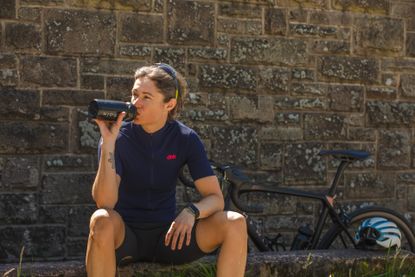
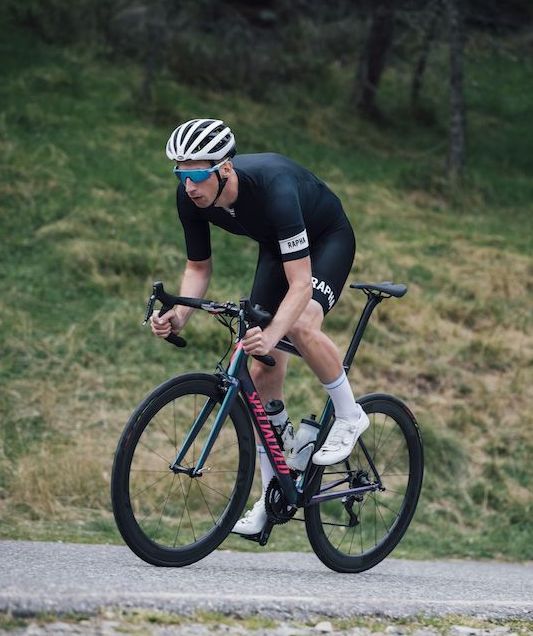
Let's not beat around the (now brown and undernourished) bush: it's hot. The heat wave may not be around long, which is great news if you like the sun but not ideal for your cycling life if you struggle to ride in the heat.
Riding in the heat may be far more appealing than venturing out on a grim winter's day, but it comes with its own set of challenges to overcome as your body deals with high temperatures.
“Exercising in the heat can lead to fatigue and at worse illness and injury,” warns Dr Jeffrey Aldous, Senior Lecturer in Exercise Physiology at the University of Bedfordshire. "Naturally, given this, it can also affect your performance.”
We've put together six simple tips to follow to help you avoid some common pitfalls when hot-weather riding.
1. Keep hydrated
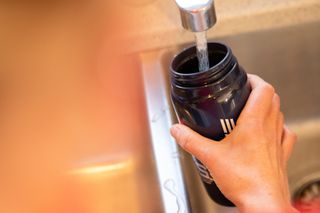
One of the biggest obstacles with cycling in hot weather is maintaining adequate hydration. You will sweat more as your body naturally tries to cool itself down, but that sweat will evaporate quickly, meaning that it is hard for you to gauge exactly how much fluid you are losing.
Drink little and often when riding, and make sure that you have plenty of drink with you or know of places on your route where you can obtain more drinks.
It is amazing how much drink you can get through on a hot day - drinking two full bottles during a long ride is pretty normal. The worst thing you can do is drink only when you become thirsty. Instead keep sipping from the beginning of your ride until the end.
Get The Leadout Newsletter
The latest race content, interviews, features, reviews and expert buying guides, direct to your inbox!
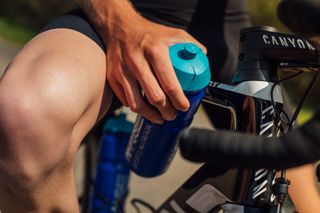
Using drinks with electrolytes can be a good idea to replace those lost by sweating, which can cause cramping. Packing ice cubes into your bottle before you leave will help keep your drink cool, at least for the first half an hour.
And don't forget in among all the drinking to pay attention that you are eating enough on your ride, too.
“If you can record your body mass, both before and after your exercise,” Dr Aldous recommends. “Try to consume 1-1.5 litres of water for every kilogram of body mass lost.
"When dehydrated your heart will need to work harder as the viscosity (that is the resistance) of your blood goes up, making it more sticky and harder to pump blood around the body.”
2. Dress for the weather
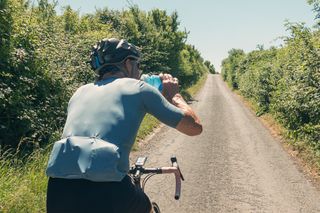
With a huge array of technical cycle clothing now available on the market at a whole range of prices, there's really no excuse to be throwing on your long-sleeved winter jersey when its 30 degrees and boiling-in-the-bag. Lightweight materials with wicking properties will help you cool off and prevent the uncomfortable build-up of sweat.
A full-length front zip on a summer jersey can help you regulate temperature, and a lightweight base layer can also aid the removal and evaporation of sweat from your skin. The breeze you create by riding along has its own cooling effect, and it's sometimes only when you stop riding do you appreciate exactly how hot it is.
Fingerless cycling gloves and mitts are a better idea than no gloves, as sweaty palms can become sore when gripping the bars. Lightweight, sweat-wicking cycling socks are also very cheaply bought from any cycling retailer.
A well-fitting pair of bib shorts are also essential, any rubbing on your delicate parts exacerbated by sweat can cause uncomfortable soreness very quickly. Applying chamois cream before a ride can help. Wear sunglasses with 100% UV filtering lenses to prevent damage to your eyes and stop dust, bugs and flies taking a bath in your eyeballs.
3. Keep an eye on the road surface
Having dealt with snow, ice, rain and potholes during the winter, summer brings a different set of road conditions to be wary of. On very hot days, tarmac can melt, causing patches of slippery or sticky tar as the road surface lifts off in the heat. Aside from the danger of riding on an unstable surface, the tar can become stuck to your tyres, attracting grit and dirt.
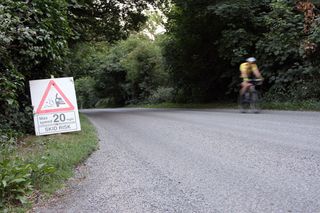
Many British councils also use the summer months to surface dress backroads - a process where liquid bitumen in pour on the road surface and a layer of gravel is added. Excess gravel can then accumulate in loose patches, particularly at the side of the road and at junctions, causing tyres to lose traction. Also watch out for wet roads after a summer storm, they can be very greasy, particularly under dense trees.
4. Wear suncream
While some cyclists are proud of their cycling tan as a badge of honour, others find it embarrassing to look as though you are still wearing a white T-shirt when you take your top off. But laughable tan lines are not the main concern - damaging sunburn and the risk of skin cancer due to excessive ultraviolet light exposure are a problem.
Wear sunscreen on the exposed parts of your body: arms, legs, face and in particular the back of your neck. The position on your bike means that the area on the front of your legs above the knee and calves will be exposed to sun more than other area of your legs.
5. Ride in the morning or evening
A very obvious way to avoid the severity of the sun's rays is to avoid the hottest periods of the day for your cycling trip.
“Radiant heat gain directly from the sun is at its greatest in the afternoon and lower during the morning or evening periods,” Dr Aldous says. “This will decrease the physiological strain on your body during exercise.”
There's plenty of daylight in the summer months, so heading out early or at the end of the day can still mean you are riding in the warm, but without many of the hazards.
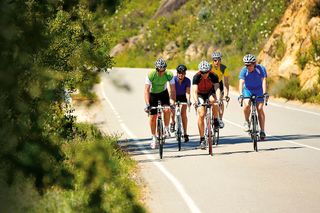
Riding in the morning or evening can have its own benefits - quieter roads, and spotting wildlife that is usually hidden away as the sun fully rises in the sky.
If you ride in the evening, make sure you are equipped with bike lights in case you're enjoying yourself so much you get caught when the sun goes down. Night riding can also be fun with a decent set of lights - you'll see familiar roads literally in a new light.
Packing a lightweight windproof or vest in a back pocket on an evening ride might also be a good idea if the weather cools down as the sun sets.
6. Adjust your targets
A heatwave is not the time to try to set a PB on a Strava segment or retest for your best 5- or 10-minute power.
The harder you work the more you will sweat, so if it's really hot and you're starting to feel it and are romping through your drinks, knock off your pace or shorten your ride.
“Exercising in the heat elevates your core body temperature and if you slow down this rise will be less pronounced, allowing you to continue exercising for the full distance or duration in your training schedule,” Dr Aldous says.
“Rethink the time and distance you would like to cover too, as prolonged periods of time in the heat can be dangerous.”
And when you get home…

Pay particular attention to fluid intake when you get home, but also don't forget to eat as you would normally after a ride. Making a recovery drink before your ride and putting it in the fridge ready for your return will provide you with a refreshing, fuss-free cold drink. A cold bath or shower will help you cool off and wash off the accumulated grime. You may also feel you deserve an ice cream or two…

Thank you for reading 20 articles this month* Join now for unlimited access
Enjoy your first month for just £1 / $1 / €1
*Read 5 free articles per month without a subscription

Join now for unlimited access
Try first month for just £1 / $1 / €1
Follow on Twitter: @richwindy
Richard is digital editor of Cycling Weekly. Joining the team in 2013, Richard became editor of the website in 2014 and coordinates site content and strategy, leading the news team in coverage of the world's biggest races and working with the tech editor to deliver comprehensive buying guides, reviews, and the latest product news.
An occasional racer, Richard spends most of his time preparing for long-distance touring rides these days, or getting out to the Surrey Hills on the weekend on his Specialized Tarmac SL6 (with an obligatory pub stop of course).
- Anna Marie AbramFitness Features Editor
-
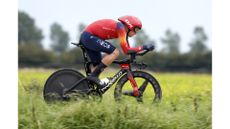 Overachiever: Cameron Wurf competed in the Amstel Gold, La Flèche Wallonne and an Ironman, all in just eight days
Overachiever: Cameron Wurf competed in the Amstel Gold, La Flèche Wallonne and an Ironman, all in just eight daysCameron Wurf is both a member of Team Ineos Grenadiers and an accomplished professional long course triathlete who has racked up numerous World Tour and Ironman race finishes across his career.
By Kristin Jenny Published
-
 The tech nerd's guide to the perfect coffee
The tech nerd's guide to the perfect coffeeJoe on Joe. What does it take to make a fine mug of Joe? We sent Joe Baker to find out.
By Joe Baker Published
-
 21 ways to get your season off to a flying start
21 ways to get your season off to a flying startMotivation is key: achievable, aspirational goals with clear checkpoints is a great place to start. Structured training, bike servicing and joining a club will all help set you on the right trajectory, too
By Charlie Allenby Published
-
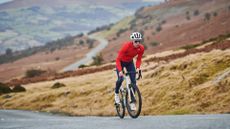 Eight-step guide to crafting your achievable goal this year, according to a cycling coach
Eight-step guide to crafting your achievable goal this year, according to a cycling coachHow to come up with a target you can hit - plus some pointers on how to stay on track
By Chris Marshall-Bell Published
-
 Why is everyone talking about Zone 2 training? Tadej Pogačar, or rather his coach, is responsible - here’s why
Why is everyone talking about Zone 2 training? Tadej Pogačar, or rather his coach, is responsible - here’s whyThe cacophony of praise for Zone 2 training of late left Chris Sidwells scratching his head. So he decided to find out what all the fuss was about
By Chris Sidwells Published
-
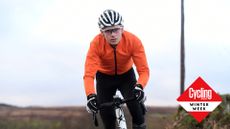 Seven benefits of riding outdoors - which you’ll miss out on if you train inside all winter
Seven benefits of riding outdoors - which you’ll miss out on if you train inside all winterAs with most things in life, there is a balance to be struck…
By Andy Turner Published
-
 Winter fueling: how to match your cycling nutrition to the demands of cold weather riding
Winter fueling: how to match your cycling nutrition to the demands of cold weather ridingGetting the most out of your winter training means making sure you are optimally fuelled for every ride - here's what you need to know about the specific demands of cold season nutrition
By Joe Laverick Published
-
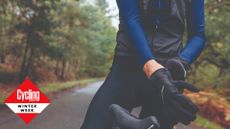 Suffering from numb feet or hands when cycling? Here's how to combat the cold
Suffering from numb feet or hands when cycling? Here's how to combat the coldYour extremities are the first to suffer when the temperture drops. Here's how to avoid painfully cold hands and feet
By Hannah Bussey Published
-
 Ten steps to the perfect amateur 'off-season'
Ten steps to the perfect amateur 'off-season'The season of weight training and nutritional debauchery is here
By Michelle Arthurs-Brennan Published
-
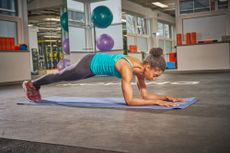 Can you hit these 11 off-the-bike fitness and health benchmarks?
Can you hit these 11 off-the-bike fitness and health benchmarks?Throwing down almost a dozen strength, flexibility and health benchmarks, we dare you pedalling specialists to put some numbers on your all-round athleticism
By Chris Marshall-Bell Published